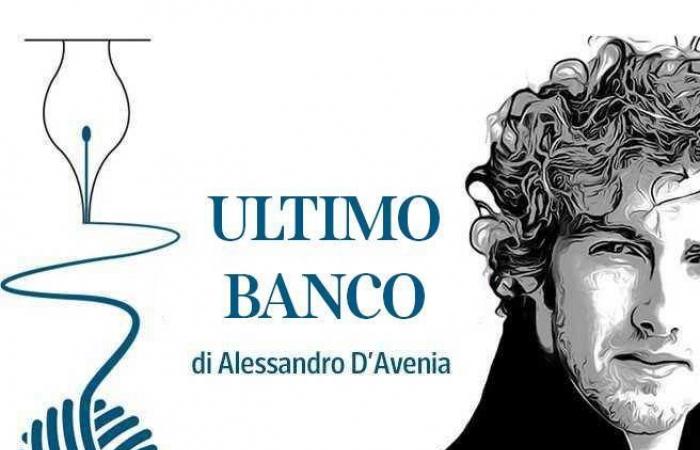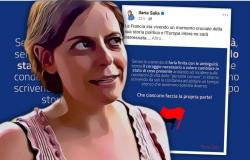The beautiful documentary Let it be by Michael Lindsay-Hogg, recently re-edited by director Peter Jackson, tells the story of the Beatles’ last concert, performed at midday on 30 January 1969 on the roof of the Apple Records in London. The filming follows the creative process of the group who will split up shortly after. In the midst of evident contrasts, a miracle then happens, that thing we call “grace”, a beauty that is not the sum of additions but their synthesis in new life, because beauty is not something controllable but that which can only be achieved. give a chance to happen. And music, among the arts, is perhaps the one that shows this most. The concert overcomes the now distant wishes of the four Beatles, the singing overcomes disenchantment, and in fact, just to listen to them, people climb onto the roofs, crowd together in the street, so much so that the police have to intervene to restore order (the grace creates the order of freedom, the opposite of that of control). Notes and words, after 55 years, still take us to the space-time of joy. Let it be: let it be, an invitation to accept that everything passes, even the Beatles, but above all to be amazed by what remains forever. Discover the eternal in the mortal, precisely because it is mortal. A happy life is in fact a balance between letting be and doing. How to find it?
Obsessed with control, we suffocate life, which is instead a synergy of doing and letting be, first in ourselves and then in the world, as happens in a concert. The agreement of voices and sounds is present in nature in a surprising way, as Davide Monacchi showed a few years ago in the award-winning documentary Dusk chorustaken from the project «Frammenti di Esclusione» aimed at acoustically exploring the oldest equatorial forests, recording the sounds of the areas with the highest biodiversity. Those who listen (I did it in a dark sphere with immersive audio during the design week in Milan) become part of the forest, thanks to the 3D sound technology that captured the calls of insects, birds, amphibians, mammals (and even trees). Monacchi then translated the sounds into an acoustic spectrogram of the ecosystem, where you can see the sound bands in which the different animals are placed. The moving fact is a harmony in which the calls do not overlap, but create chords: either they occupy different frequencies or they alternate if they use the same one, according to an invisible score. Unfortunately, however, when human noise pollution occupies some frequencies, the animals that use them are forced to abandon the ecosystem, and some become extinct: from concert we pass to bewilderment, from agreement to disagreement, from song to disenchantment. In nature, therefore, each “voice” occupies its place and harmonizes with the others. This symphony, to which we would be more educated if we frequented natural sounds (it is significant of our nostalgia for peace that among the most followed playlists on the platforms there are precisely those that reproduce these sounds), is what we aspire to, but often we ourselves destroy it. In fact, if we could make the spectrogram of our acoustic context, we would discover how much we are excluded or we escape from our own sound band, or perhaps we occupy that of others. Today’s communication, shouted and saturated by those who have the means to make more noise, tends to cover voices, especially that of young people, because the frequency on which to exercise it is occupied by those who should not be there. Thus we slip into the univocity (which means “one voice”) and monotony (“one tone”) of control. To live, instead, we need a choral human ecosystem that allows each person to discover and use their own voice, which is the way we have chosen to indicate, metaphorically, personal uniqueness: finding one’s own voice (hence vocation) is in fact synonymous with authentic life. But vocation also means convocation: chorality, the instrument is an orchestra, the individual is a community. We are made so that voices harmonize in their diversity in a symphony that is not given by their sum but by a collaborative overcoming, as Tolkien fascinatingly narrates in the story that gives rise to his world, the Silmarillion. The protagonists of the origin of the universe are spirits who live before time together with Eru Ilúvatar, the supreme god. Eru actually summons them and proposes a great musical theme, asking them to develop it to give life to all things. Beauty expands and embodies chorally until one of these spirits decides to strike out on its own, betraying the harmony of the theme and the orchestra: evil is a bewilderment, an act that prevents letting it be. Let it be. Even at school we try to do the same by helping kids find their own voice, and it’s particularly evident to me on graduation days.
But do we still have a musical theme to develop? Is there still a score?
At the end of the year the graduates gave me an edition of theOdysseythe same one we used to read the poem aloud in its entirety during the first of five years of high school, the one we lived remotely. That reading experience in which each voice embodied a character from a different and dispersed point of the city, remained in our memory like a concert, when instead the harmony was destroyed by distancing. On the first page of the book of a story from three thousand years ago they added their signatures, the ones they are starting to use for their new responsibilities. Inside there were their voices. In fact, each one had underlined the most beloved passage, placing their name next to Homer’s words. So my collection of Odissee I added the most beautiful one, made of names and voices (verses). When I open it I listen to “class” music: faces and vocations, that is, school, a place where, if we were not burdened by bureaucracy, performances and commitments that have little to do with education, we are called to seek the balance between doing and letting be, to avoid both control and indifference. And isn’t this perhaps the work of life? This book, which has become for them a sort of musical theme to develop, will be for me a Ode to joy, in which each voice, unique, like each vocation, in terms of height, timbre, intensity and duration, is linked to others in a convocation that overcomes singularities and time. And isn’t love perhaps about being “the voice that is due to you”, like the title of the book of a poet in love? When I come home late for lunch after final exams and find a post-it saying “I love you” and “you could eat this”, am I not listening to the daily song of life? A harmony of doing and letting be like the gardener takes care of his plants?
In music all this happens thanks to silence. With the school break, even theLast bench. My wish is that you can (re-)find your voice, unique and necessary to the concert of life. The bewilderment, disagreement and disenchantment into which we sometimes fall are not reality, but a betrayal of the voice due to us and of those to which, by ecosystem, we are linked. Life aspires and tends in fact to the chorus of the virgin forests and the concert on the roofs of a noisy city. I hope that this column has also whistled at least a joyful tune for you, which I thank you for having listened to even on the most tiring Mondays. We will meet again in September for a new song.






